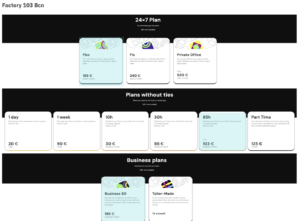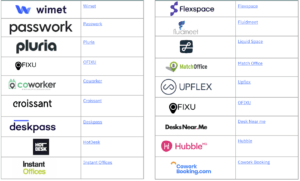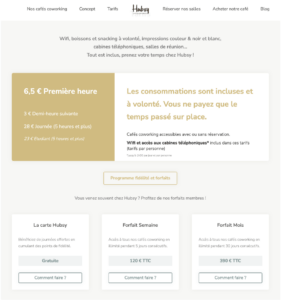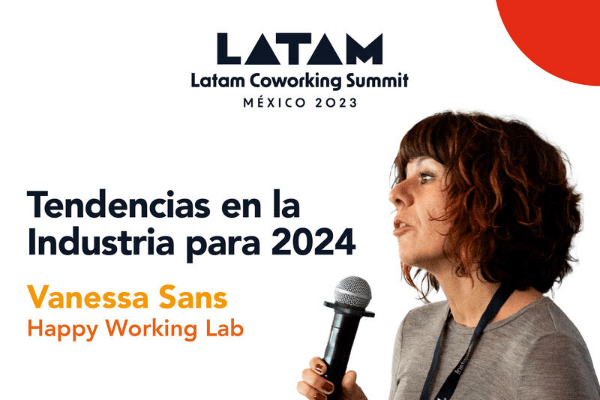Both remote and hybrid work have brought new needs for workers, companies and society. Mainly, they demand flexibility, not only in how they work but also in how they live. These needs present challenges that the SPaaS (Space As A Service) model solves perfectly.
In this last article of the year, we share with you ten coworking trends associated with flexible working, detected during the previous two years in 17 coworking, coliving and coplace projects that we have developed in different parts of the world. Here are our top 10 coworking trends for 2024 that are here to stay:
#1. Hybrid models: Coplaces
The demand for flexibility in work and living is causing office and home concepts to merge. As a result, a new hybrid model is emerging that unites coliving with coworking, producing a positive impact on society, the economy and the environment by optimising available space, providing affordability, reducing emissions and waste (avoiding commuting), as well as providing a meaningful community, among many other benefits. In addition, coplaces host a glocal community of foreign and local professionals; this diversity of members enhances and enriches the quality of the community in question.
#2. Growth of the On-Demand Product
According to Deskmag’s 2023 global survey, demand for the flex product has grown by 9% and is estimated to grow by up to 20%. Room bookings have increased by 7% compared to 2022. It is due to:
- Organisations are carrying out hybrid work strategies.
- Recruitment is now unrestricted by geography, and more and more companies are including coworking memberships in their employees’ payroll.
- The increasing apparition of booking platforms offering flex plans

#3. More technological spaces
The optimisation of processes and the automation of operations are crucial to offering a good user experience, as well as improving daily operations and reducing marketing efforts. User experience is becoming increasingly important; the coworking user is now willing to pay more for a good working experience. However, providing excellent customer service and measuring and increasing customer happiness is difficult without technology.
For this reason, we see more user-centric technologies in flex and coworking spaces:
- Self-service Apps for ordering services on the go.
- Occupancy and air quality meters.
- Artificial intelligence.
- Virtual reality.
- Metaverse.
- Growth of tech tools.
We have prepared a Coworking Tech Guide to help you choose the most suitable tech solution for your business.
#4. Goodbye to the traditional office
The traditional office is in decline, and coworking is on the rise because coworking offers more attractive advantages in terms of cost and productivity efficiency. In addition, with the introduction of hybrid working, many offices find themselves with completely unused space, whereas in a coworking space, they pay for what they use.
More reasons why companies are migrating to coworking:
- It does not make sense for companies to prolong expensive office leases with unused space.
- Because of the market uncertainty caused by pandemics, wars, natural disasters and force majeure.
- Companies are integrating coworking as a recruitment strategy to attract and retain talent.
- The ’15-minute city’ concept will increasingly become a reality and will lead to an increase in satellite offices for companies in coworking spaces as meeting points in different areas of cities.
- Corporations with disused space dedicate part of the building to external coworking.
#5. Coworking spaces close to home in big cities, secondary cities and villages
Through Google My Business, we have verified that many coworking users are looking for a workspace close to home. This platform has become an essential channel for capturing leads. We are returning to the concept of the 15-minute city, where people choose to work close to home and not waste time commuting unnecessarily from home to work.
On the other hand, we have experienced an increase in the number of spaces in residential areas, secondary towns and villages. In two years, we have developed coworking and coworking projects in Gelida (Barcelona), Vic (Barcelona), Sitges (Barcelona) and Caldes d’Estrac (Barcelona). All these places have a population between 3,000 and 40,000 inhabitants. Remote working has been a driving factor in this trend.
#6. Growth of booking platforms
Flex offices and coworking spaces sign up to booking platforms such as Coworker, Connected Hubs, Desana, Upflex, Croissant, and Letswork. These partnerships ensure that company employees can work from any coworking space worldwide.
Hereby you have a selection of platforms, operating mostly in Latin America and Europe:

#7. Third places and the cafe coworking
The normalisation of Work From Everywhere and the choice of when and where we want to work has given rise to the so-called Third Places, which are more informal and social alternatives to the office, such as hotel lobbies, cafés, and workspaces in gyms or shopping centres. In other words, all those spaces that integrate coworking as an added service.
On the other hand, we have noticed the increasing apparition of the cafe coworking as an evolution of The Third Places. An informal coworking where guests have access to work and pay for a specific plan depending on the time spent. Plans usually include beverages and food.

#8. Equity Real Estate companies and Asset Owners are the leading flex investors
Recently, our clients have become mainly real estate companies and asset owners.
The former represents a significant percentage of the investors behind some of Europe’s most important coworking brands. We find real estate companies that are snapping up independent brands to gain access to know-how. Example: Utopicus or Loom. Others are partnering with consultancies like us for the same reason. In addition, they have the advantage of rapid expansion by expanding their offer through their real estate portfolio.
The latter are realising that by exploiting the business, they are taking a bigger slice of the cake and are entering the market by detecting the flexible office as a business opportunity.
#9. Sustainability
Sustainability is a critical topic of discussion in all industries around the world today. Plastic-free and eco-conscious coworking and coworking spaces have an advantage and attract the most talented and socially conscious people, becoming an important selling point.
We recommend this article to learn more about the sustainability certifications used in coworking.
#10. We differentiate between two Coworking Persona
We can divide the users of the flex/coworking office into two main groups:
- Corporations and tech startups: These companies are recreating the traditional HQ experience with smaller footprints as they move towards hybrid working models. They are looking for shorter lease terms, occupying between 2,000 and 3,000 sqm over two, three or even five years.
- Remote workers, digital nomads, freelancers, entrepreneurs, solopreneurs, and bootstrapped startups: These are users looking for greater flexibility, smaller packages tailored to their needs, more contact and collaboration spaces, and a strong emphasis on community and services. Operators targeting this group should adopt a design focus on an enriching work experience that transforms the workspace into a destination of choice. It represents an excellent opportunity for small local and regional independent Coworking Boutique operators.
As you can see, remote work is here to stay. Consequently, people’s needs have had to change. In conclusion, flexibility and user experience have become the most demanded differential elements of value in the coworking sector.
This article results from a presentation by Vanessa Sans, founder and consultant at HWL, for Latam Coworking Summit 2023 in Mexico. If you want the original presentation, email us, and we will send it to you.
Featured image: Nest City Lab (Barcelona).
